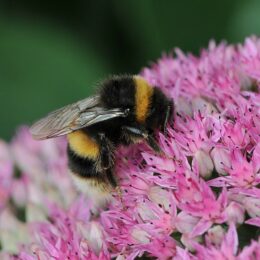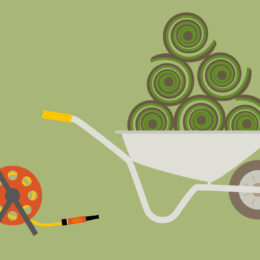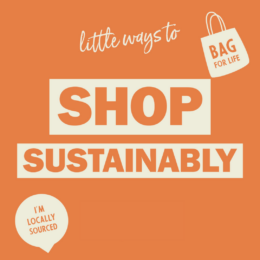Mowing the lawn can destroy wildlife habitats in your garden. Leaving the lawn to grow or at least in some areas can help wildlife by:
- Creating places to hide, give shelter, or provide homes
- Supplying food – attract pollinators such as bees, butterflies, beetles, and many more.
- Providing birds with nesting materials
If you’re not keen on the idea of having an unkempt lawn but are willing to compromise in order to support wildlife, then we have tips on alternatives you can try.
No Mow Month
If you like a tidy lawn but can bear to grow it long for a short time, the most beneficial time to do so is during May or June. Then mow as normal, this gives plants time to grow and wildlife to collect food during that time.

Mowing Neat Garden Borders
You can keep your lawn looking attractive by leaving neat unmown paths or patches. Try mowing paths through the longer grass – create straight neat edges or curving paths that wind around your garden. This will make your garden look tidy as areas will be bordered and will create flight paths for insects to dart into the longer unmown grass to collect food.


Photo by GAP Photography
Mowing after Spring
You can support wildlife throughout spring by holding off the first mow until late June or early July, afterwards mow as normal until late autumn. The long grasses can provide nesting materials for birds and any wildflowers that grow will provide early nectar for pollinators. It also means, less work in the garden until early summer! You can enhance the look of your longer grass by planting spring-flowering bulbs the autumn before, such as Daffodils, Snowdrops, Hyacinths, and Tulips.

Photo by GAP Photography
Mowing after Summer
During the summer, wildflowers will create beautiful ‘meadows’ in your garden. Try adding a wildflower seed mix for an extensive variety. Their stunning colours will add a pop of that summer feeling and will attract pollinators to your garden. These look amazing if you mow around them creating borders and paths.
If you mow in early April and leave until the end of August/September you will create a wildlife haven.

Low Carbon Benefits
When you leave your lawn unmown, it quickly reverts to natural grassland, which is effective in absorbing carbon. Not only are you helping wildlife to thrive but you’re helping the planet get rid of a little more carbon in the atmosphere.
Creating a low carbon meadow:
- Scalp your grass in early autumn.
- Sow hemiparasitic wildflowers (to weaken grasses and let wildflowers grow) – try yellow rattle, eyebright, ox-eye daisy.
- Don’t mow throughout spring and summer.
- Mow in late summer and rake any hay to add to compost.

Leucanthemum vulgare – Ox-eye Daisy flowers Photo by GAP Photography
Mow Higher and Less Often
If it’s simply not practical to leave your lawn unmown, you can still help by adjusting the mowing height to leave your grass a little longer and mow slightly less often. This will allow plants such as dandelion and clover to flower providing food for pollinators.







